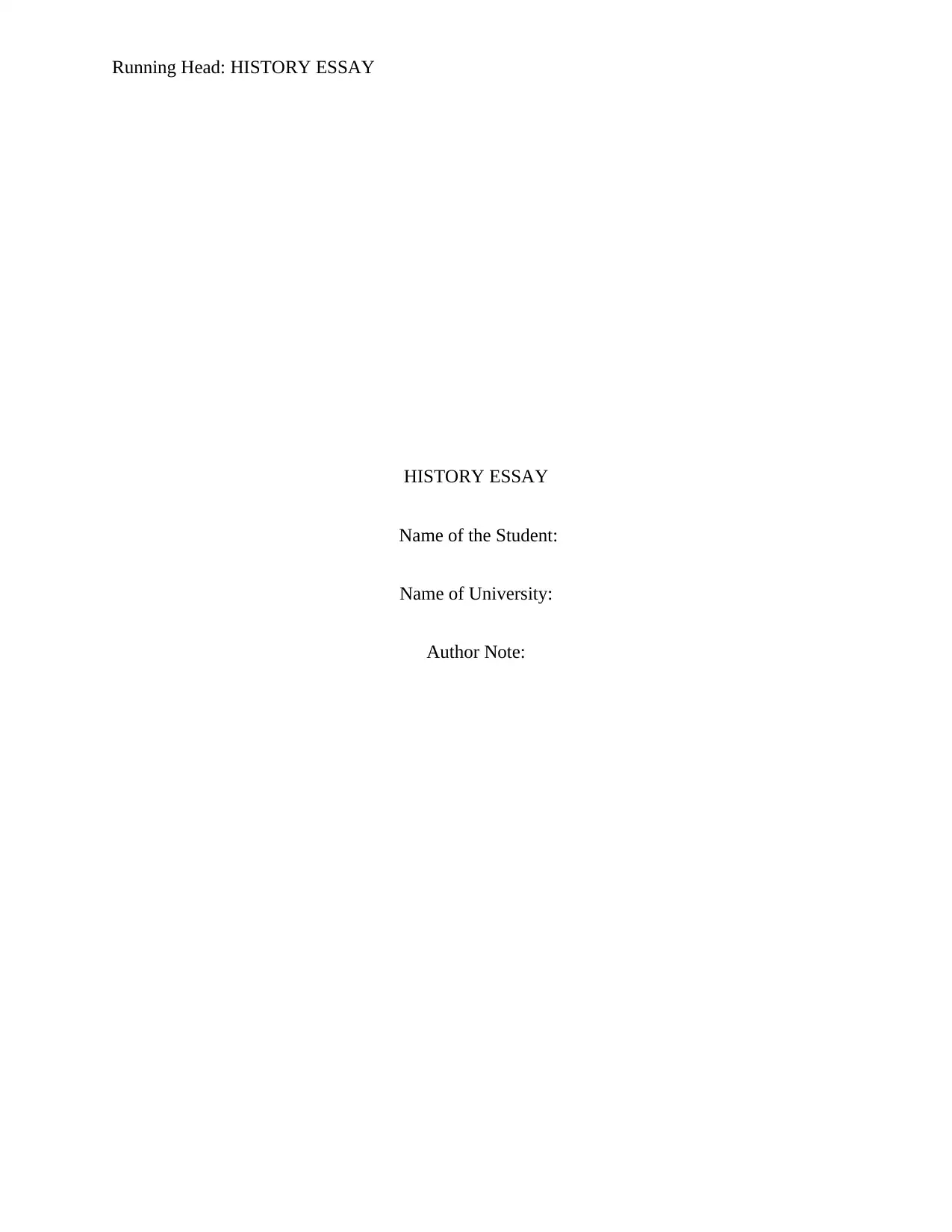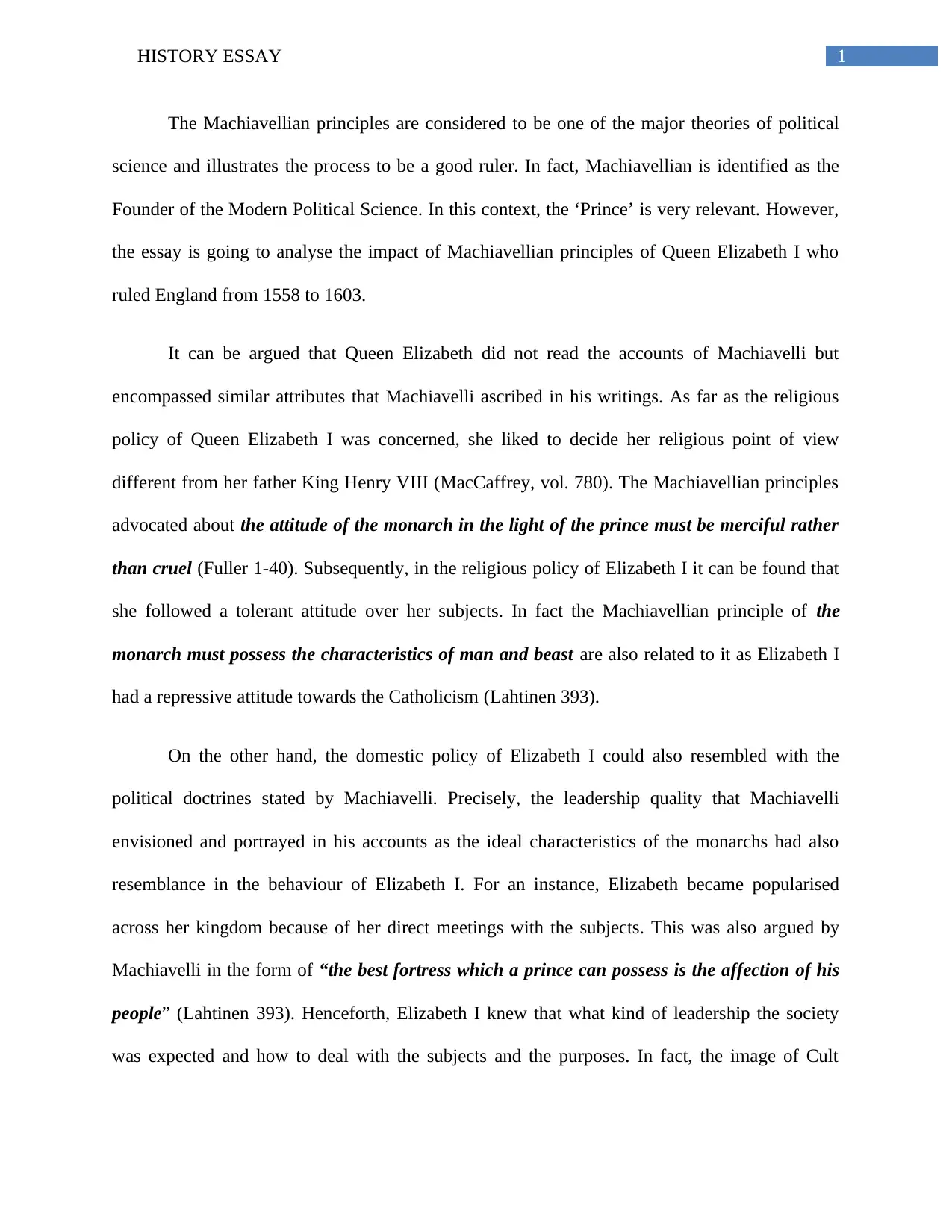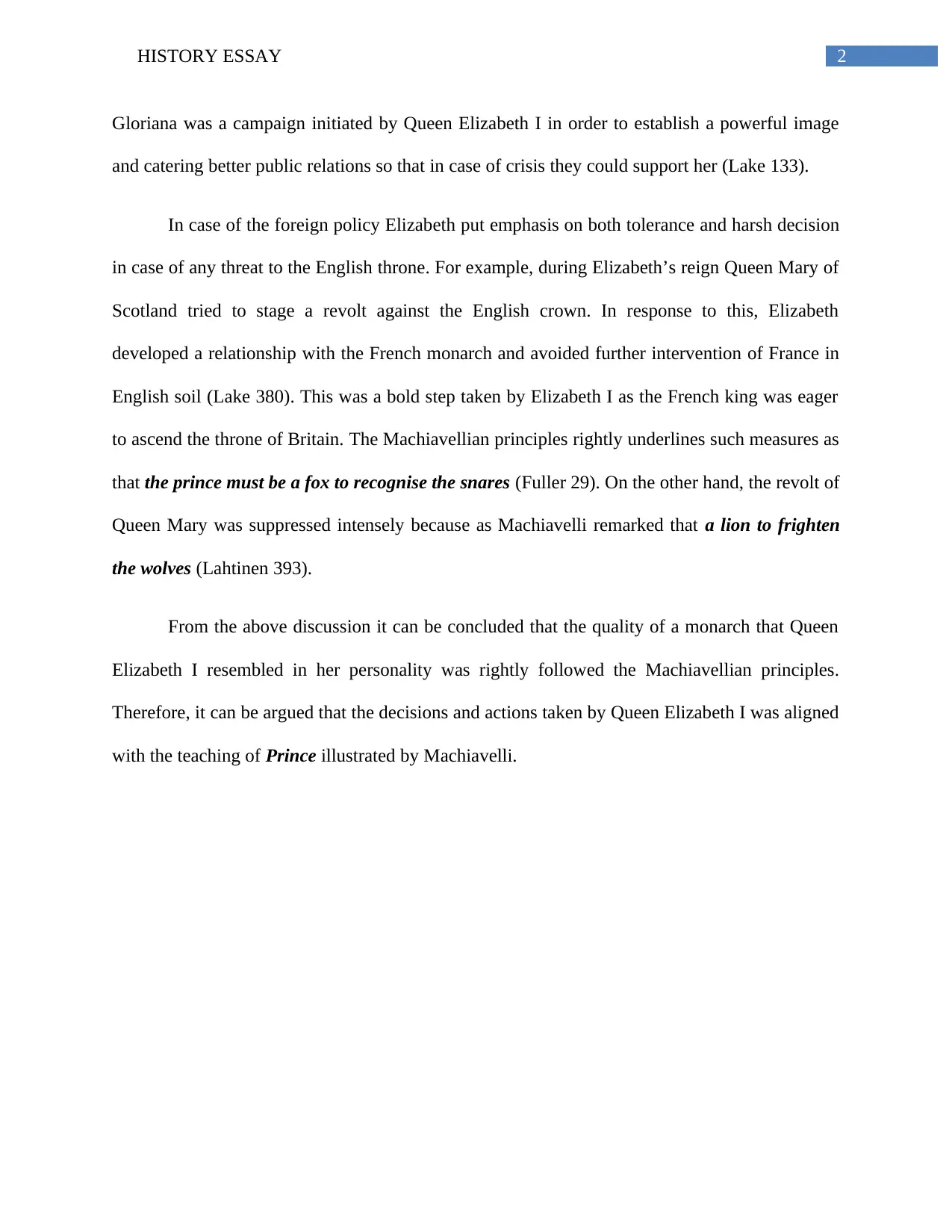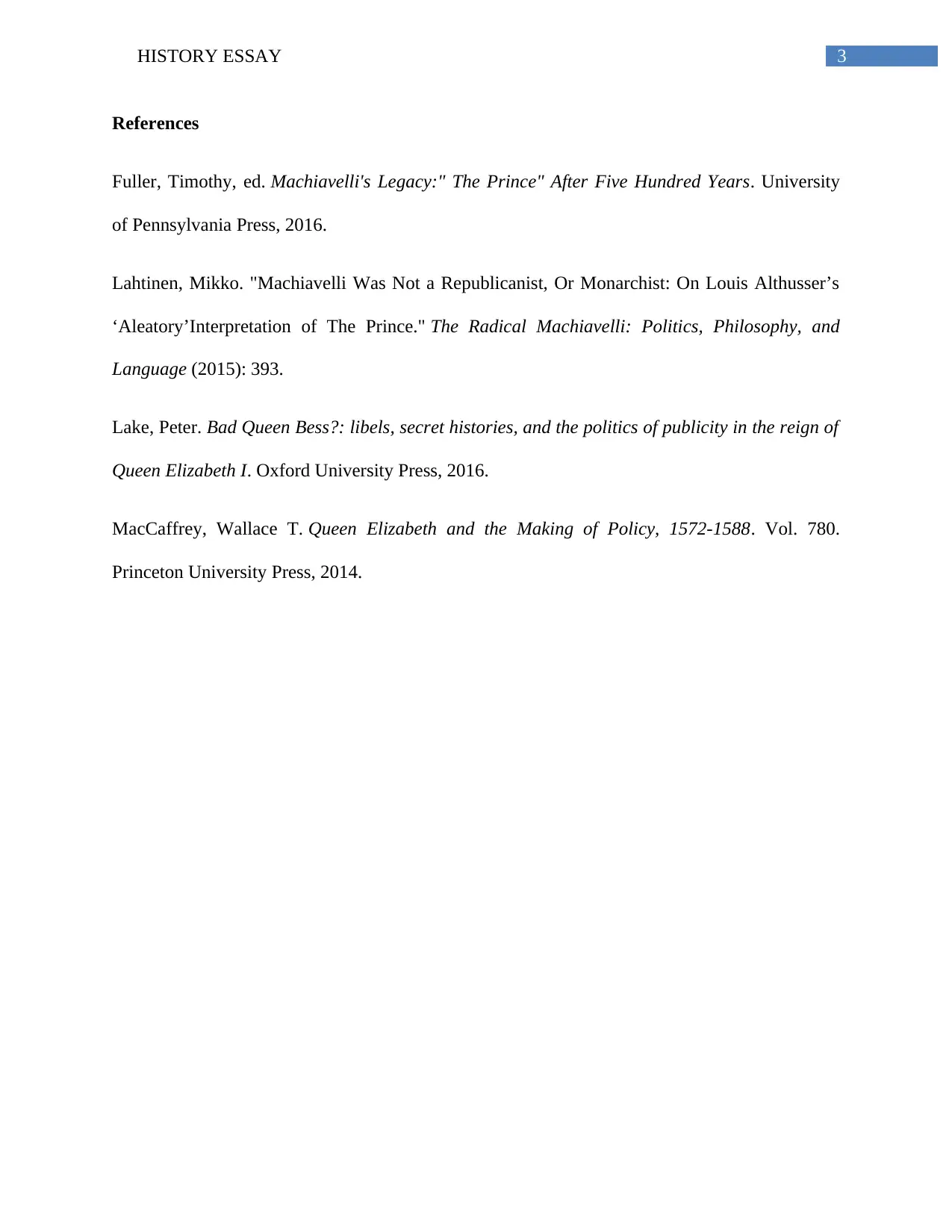Analysis of Machiavellian Principles in Queen Elizabeth I's Policies
VerifiedAdded on 2023/06/07
|4
|755
|356
Essay
AI Summary
This essay examines the extent to which Queen Elizabeth I's reign from 1558 to 1603 aligned with the Machiavellian principles outlined in 'The Prince'. The essay argues that although Elizabeth likely did not read Machiavelli's writings, her actions and policies reflected key Machiavellian ideas. It explores her religious policies, including her tolerant approach and repressive stance towards Catholicism, mirroring Machiavelli's views on the monarch's behavior. Furthermore, it analyzes her domestic and foreign policies, such as her image management campaign as Cult Gloriana, her relationships with France, and her handling of Queen Mary of Scotland's revolt, demonstrating how she employed strategies of both tolerance and harshness to secure her throne. The essay concludes that Elizabeth I's leadership style and decisions were strongly influenced by Machiavellian principles, making her a practical example of a Machiavellian ruler.
1 out of 4





![[object Object]](/_next/static/media/star-bottom.7253800d.svg)